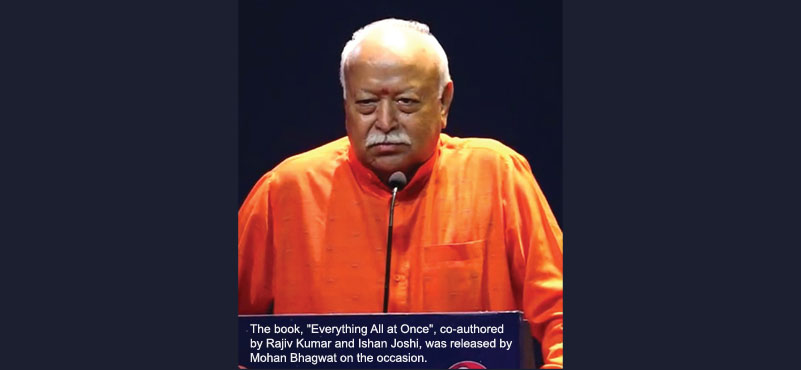Introduction
The 01st June, Ukrainian drone strike on five airbases, deep inside Russian territory, prompted The Economist to rank it ‘among the greatest military raids in history.’ Operation Spiderweb demonstrated a hybrid approach to drone warfare that combined remote human control with elements of autonomy and potentially AI-assisted functionality bring to fore the asymmetric power of low-cost high impact operations.
Similarly, during Operation Rising Lion launched on 13th June, Israeli intelligence had pre-positioned precision-guided drones and explosives in Iran. These assets were concealed and dormant, bypassing Iran’s air defences. The lack of external flight paths meant Iran’s alarm systems did not activate.
Dominance in modern conflict depends on the ability to preempt, conceal, and control tempo. Military advantage is no longer defined by scale, but by the capacity to identify vulnerabilities and exploit them without warning. Drones have changed not only the rules of the game but the game itself and now militaries need to change their strategy.
Drones the New face of Conflict
Drones first came to the fore during the Azerbaijan–Armenian Conflict and these were the Turkish TB2 Bayraktar. However, the Russia-Ukraine War has seen the rise of an array of military capabilities including the use of swarm drones as one-way attack systems previously only used in small quantities. The war can also be termed as a laboratory for drone technology and has seen a remarkable innovation in both employment and production of drones.
Operation Sindoor also marked a shift in the adoption of drones in the Indian context.
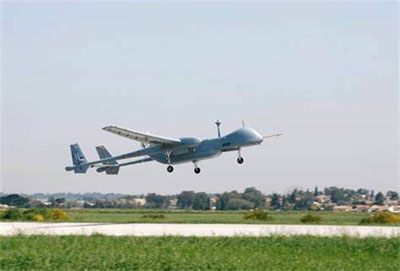 As per Jon Gruen writing in the Wall Street Journal; “Ukrainian FPV drones have caused three times as many Russian casualties as all other weapons combined.” While air defence remains focused on traditional threats such as aircraft and missiles from across the border flying at higher altitude, Operation Spiderweb has brought to the fore the threats from within, with drones flying at much lower and almost undetected altitudes exploiting gaps in radar coverage and detection.
As per Jon Gruen writing in the Wall Street Journal; “Ukrainian FPV drones have caused three times as many Russian casualties as all other weapons combined.” While air defence remains focused on traditional threats such as aircraft and missiles from across the border flying at higher altitude, Operation Spiderweb has brought to the fore the threats from within, with drones flying at much lower and almost undetected altitudes exploiting gaps in radar coverage and detection.
Drones have dramatically increased the capacity of state or non-state actors, for causing significant damage. While the number of potential targets has expanded exponentially, the means to defend each one of them from cheap drones operated from within is now that much more difficult.
The use of these drones has become a new, ubiquitous form of conventional warfare. Many are based on commercially available technology and they are relatively cheap. They are easy to produce and often have open architectures, which means the software is easy to update in response to jamming or other defensive countermeasures.
Their rapid evolution, low cost, and suitability for high-volume mass production is largely due to their use of common consumer electronic components for most key systems, with the only non-civilian component being the warhead. Key components including cameras, screens, controllers, antennas, batteries, electric motors, and others are widely available off the shelf, and often interchangeable, making it relatively easy to source alternatives if a component becomes unavailable, thereby providing built in redundancy.
The attack in Russia was facilitated by sleeper agents. One needs to imagine the chaos and destruction that a similar attack could cause, not just to strategic assets and infrastructure, but also at populated places. Drones have now opened a huge range of targets which were previously inaccessible by land to including targeted assassinations or pin point attacks on strategic assets and so on.
The exponential rise of relatively small aerial threats in the Russia-Ukraine conflict including copter-type and fixed-wing reconnaissance, and/or strike UAVs, FPV drones and loitering munitions, necessitated the development and deployment of an Early Warning network comprising acoustic detectors, direction finders, and radars, to provide early warning and track their approach. So technology is changing as we read, on one side, a threat or weapon system is developed and almost simultaneously, on the other side, its counter or defence is also being developed.
Operation Rising Lion
In the recent Israeli strike on Iran the most striking aspect of Operation Rising Lion was Israel’s ability to achieve tactical surprise through pre-positioned assets rather than relying solely on standoff weapons. The Mossad had smuggled weapons into Iran ahead of the 13 June strikes, establishing a base of operations from which it remotely launched explosive-laden drones and positioning short-range, precision weapons near critical surface-to-air missile systems.
This base played a pivotal role in the early stages of the operation, with unmanned aerial vehicles (UAVs) launching overnight to neutralize surface-to-surface missile launchers, radar systems, and air defence networks. These strikes from within were not high yield in firepower but strategically designed to create temporary blind spots in radar coverage, and confuse ground coordination during the critical opening moments of the Israeli air campaign.
The base was established through gradual smuggling of drones, surveillance gear, and command modules via Mossad intelligence networks, and is believed to have operated with local assistance from sleeper cells or sympathetic insiders.
Operational Rising Lion is a blueprint for future joint campaigns and suggests key investments adaptations to the changing character of war. These include accelerating efforts to integrate low-cost drones in conventional operations and long-range precision strike campaigns, alongside rethinking defence in depth to protect critical assets.
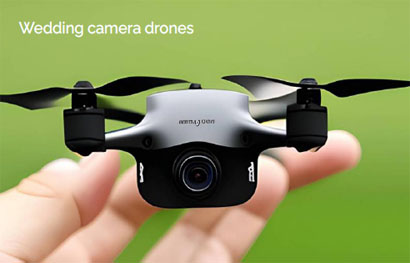
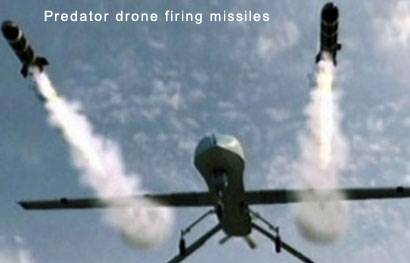
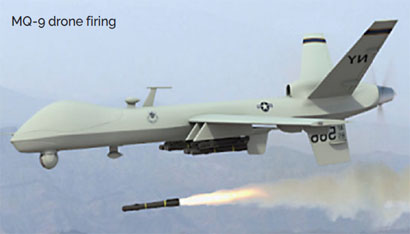 Lessons for India
Lessons for India
India faces a collusive hybrid challenge from two nuclear-armed neighbours, China and Pakistan and coupled with this are the internal challenges with the ongoing proxy wars abetted by our neighbours. Bangladesh too, is an emerging threat, who may readily join the collusion or anti-India bandwagon. We will have to wait and watch.
Airspace is treated as sovereign by nations. It is a controlled environment that is mapped, regulated, and monitored. Air defence systems are built on the assumption that threats come from above and from beyond national borders.
Yet, Operation “Spider Web” exposed what happens when countries are attacked from within. The drones flew low, through unmonitored gaps, exploiting assumptions about what kind of threat was faced and from where. In low-level airspace, responsibility fragments and detection tools evidently lose their edge. A great lesson here for India, first, it is not the weapon but how and where you use the weapon, that is paramount. Secondly, complacency is a bigger enemy than the enemy itself. Never revel in the fallacy that all gaps have been plugged.
Gaps in airspace can be exploited by an adversary with enough planning and the right technology. This can happen anytime, and not just in war. The technology is not rare and the tactics are not complicated and are highly adaptable by non-state actors.
More importantly it also shattered the illusion that distance ensures safety. But what is now concerting is the use of sleeper cells or local support to facilitate use of this technology which renders even in-depth areas as vulnerable, especially because they have not been created with defensive tiers around them. Anyone who can smuggle, hide, and pilot small drones can cause destruction with surprise and creativity as was witnessed by the innovate means of the deployment and concealment of drones.
This will necessitate for hardening of shelters to protect assets from such attacks, dispersal of critical assets to avoid putting them all at risk and countermeasures to defeat such drone attacks. Rear-echelon installations and critical infrastructure will now need to be accorded similar security as frontline positions. The vulnerability of Rear Areas now stands exposed. Anti-drone measures must be put in place to defend all high-value targets. There may also be a need develop new tactics and anti-drone capabilities akin to an AD umbrella used to protect offensive formations.
Solutions can range from low-cost options such as overhead protection and camouflage to electronic warfare and jamming, engagement by Air Defence weapon systems and by looking at developing new technologies to track and disable drones on approach.
The former Army Chief General Naravane feels the government should “declare ‘no-fly zones’ near vulnerable areas and enforce them through severe penalties.” He has also expressed concerns regarding the lack of accountability in India’s growing drone ecosystem. It must be made mandatory for all such companies to register themselves and provide details of their manufacturing or assembly capacities, with a record of sales and verified end-users. An underground market for drones cannot be allowed to flourish. This is a very appropriate thought that is the need of the hour. Every wedding is flouting camera drones, so are all public events. Use of any such aerial platforms need to be banned and controlled with stricter scrutiny than what is in vogue for issue of an arms license.
Our adversaries, most notably including terrorists, are not oblivious of the employment of drones for furtherance of their nefarious designs. This challenge makes it imperative to have a regulatory mechanism so that it becomes difficult if not impossible for these elements to seize these tools for their use.
While countering a drone threat by conventional and innovative means is one end of the spectrum but at the same time, we need to build own drone capabilities with regard to indigenous drones, armed UAVs, and autonomous weapons systems.
Beyond the battlefield, the attack holds valuable lessons for India, not just militarily, but also for internal security. Our military modernisation must be driven by public and private sector defence tech collaboration, and, re-examination of existing inventories, doctrines, and tactics because of this new age weaponry especially considering Operation Sindoor.
India needs to think and think hard, the attack in Russia was facilitated by sleeper agents, so was it in Iran. Where in the world do you think there are more sleeper cells, than in India? They are where; you cannot imagine them to be. So, there must be a Central Government driven ruthless drive, to cleanse out the sleeper cells. No room for complacency here. And second is a realistic evaluation of the target(s) that would merit attention of such sleeper cells, and lastly, the protection of the same. Therefore, India has to invest deeply in improving its intelligence network, which is better done yesterday than today.
At the same time, we need to look at our own assets, their protection, as well as their utility in the circus of the drones.
Conclusion
Drones have completely upended the economics of war, particularly air war. Precision strikes that require satellite targeting, guided munitions and expensive platforms such as aircraft or missile systems can now be carried out by individuals with minimal investments, weaponising commercially available off the shelf devices and technology. Small, autonomous systems when staged forward and synchronised with long-range fires are compressing the timeline to relative superiority ‘the moment a smaller attacking force gains a decisive advantage.’
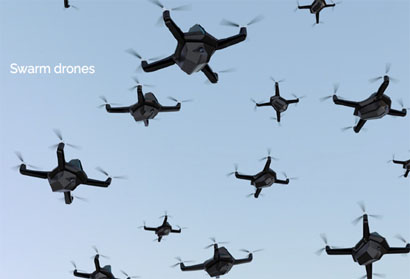 Cheap and easily modified, unmanned aerial vehicles have become a part of tools used for intelligence gathering, surveillance, sabotage, terrorism and more. Concerns about their misuse need to spur cost effective developments both kinetic and non-kinetic for ways to stop the devices in midair.
Cheap and easily modified, unmanned aerial vehicles have become a part of tools used for intelligence gathering, surveillance, sabotage, terrorism and more. Concerns about their misuse need to spur cost effective developments both kinetic and non-kinetic for ways to stop the devices in midair.
India needs to be seized of this inevitable threat as far as use of drones not only by the adversary is concerned but also by non-state actors and terrorists using easily weaponized commercially available drones aimed not only at strategic assets but also at important personalities.
While the larger consequences of the attack are yet to take hold there is no doubt that combating this challenge requires a whole government approach as inexpensive drone technology that has advanced rapidly in the last decade is being combined with outside-the-box thinking.
While the audacious attack is shaping a new kind of warfare, it is also a wakeup call for India to re-examine the blueprint of its aerial threats. The scope, impact, and psychological implications of such precision attacks. They can no longer be relegated to the realm of fantasy.
ABOUT THE AUTHOR
 Maj Gen VK Singh, VSM was commissioned into The Scinde Horse in Dec 1983. The officer has commanded an Independent Recce Sqn in the desert sector, and has the distinction of being the first Armoured Corps Officer to command an Assam Rifles Battalion in Counter Insurgency Operations in Manipur and Nagaland, as well as the first General Cadre Officer to command a Strategic Forces Brigade. He then commanded 12 Infantry Division (RAPID) in Western Sector. The General is a fourth generation army officer.
Maj Gen VK Singh, VSM was commissioned into The Scinde Horse in Dec 1983. The officer has commanded an Independent Recce Sqn in the desert sector, and has the distinction of being the first Armoured Corps Officer to command an Assam Rifles Battalion in Counter Insurgency Operations in Manipur and Nagaland, as well as the first General Cadre Officer to command a Strategic Forces Brigade. He then commanded 12 Infantry Division (RAPID) in Western Sector. The General is a fourth generation army officer.
 Major General Jagatbir Singh was commissioned into 18 Cavalry in December 1981. During his 38 years of service in the Army he has held various command, staff and instructional appointments and served in varied terrains in the country. He has served in a United Nations Peace Keeping Mission as a Military Observer in Iraq and Kuwait. He has been an instructor to Indian Military Academy and the Defence Services Staff College, Wellington. He is a prolific writer in defence & national security and adept at public speaking.
Major General Jagatbir Singh was commissioned into 18 Cavalry in December 1981. During his 38 years of service in the Army he has held various command, staff and instructional appointments and served in varied terrains in the country. He has served in a United Nations Peace Keeping Mission as a Military Observer in Iraq and Kuwait. He has been an instructor to Indian Military Academy and the Defence Services Staff College, Wellington. He is a prolific writer in defence & national security and adept at public speaking.


